Remedial Massage
Yes. Please let us know when you book and remind your practitioner prior to your therapy.
We encourage you to discuss your preferences with the massage therapist and to give feedback.
Yes. We use herbal oils in our massage treatments. For a small extra fee you can choose from our range of essential oils (speak to your therapist).
All GTC Massage and Acupuncture acupuncturists have a bachelor’s degree in traditional Chinese medicine. All of our massage therapists receive training in both Chinese and western-style massage techniques.
Yes. You are encouraged to make a booking with the therapist you would like to see.
No, in most cases you don’t need a doctor’s referral.
Bad neck, shoulder and back pain? The reason is that it did not loosen it-the scalene muscle
Many friends have neck pain, shoulder pain, pain around the shoulder blades, and even pain in the upper limbs.
Long-term bowing posture will cause the cervical spine to be arranged disorderly, and the muscles of the neck and shoulder muscles will be unbalanced. Over time, our neck, shoulder and back will have pain. So some people will ask, am I suffering from cervical spondylosis?
There are many types of cervical spondylosis, including cervical type, nerve root type, spinal cord type, vertebral artery type and so on. Among them, cervical spondylosis is also called partial cervical spondylosis.
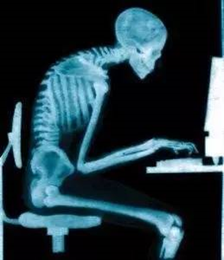
It has pain in the head, shoulders, neck, and arms and corresponding tender points. There is no obvious degenerative changes such as intervertebral space stenosis on X-ray films, but there may be changes in the physiological curve of the cervical spine. , Intervertebral instability and mild bone hyperplasia and other changes.
let’s talk about common cervical spondylosis. There is no idiopathic cause of cervical spondylosis. It is due to the imbalance of muscle strength caused by long-term bowing of the head playing mobile phones, using computers, and postures including chest hunchback, etc. , It is very likely to produce osteophyte bone spurs.
Cervical cervical spondylosis is characterized by limited range of motion of the cervical spine, muscle soreness, and sometimes noise (the noise is not accompanied by pain), often with a posture of cervical spine extension, muscle tension, tender points, shoulder discomfort and soreness , Some upper limbs will have some involved pain. Poor posture, poor sleep, cold stimuli often worsen after work and after studying.
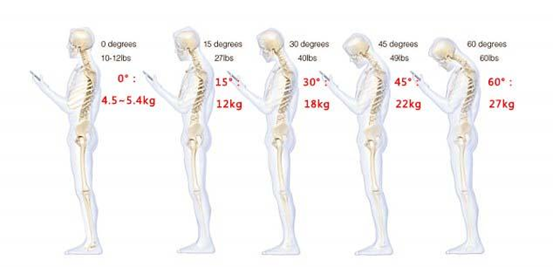
Generally speaking, rehabilitation training for this type of cervical spondylosis is to relax the trapezius and pectoralis major muscles, conduct cervical spine stability training and neck strength training. However, after these trainings, some people may not relieve the pain, but have shoulders and pain around the scapula.
What is going on here? One important muscle cannot be ignored here – scalene muscle
The scalene muscle is divided into three bundles, front, middle and back bundles.
Scalene muscle anatomy:
Anterior scalene muscle Starting point: C3-6 in front of the transverse process of the cervical spine
Stop at: Inside the upper edge of the first rib, covered by the sternocleidomastoid muscle
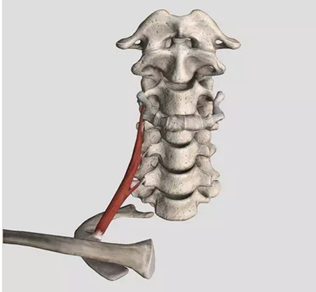
The middle scalene muscle originates from: C2-7 behind the transverse process of the cervical spine
End: to the outside of the upper edge of the first rib (in the middle and outer side of the supraclavicular fossa)
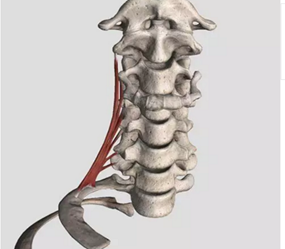
Posterior scalene muscles originate from: C5 or C6 and C7 behind the cervical transverse process
Stop at: the outer surface of the second rib
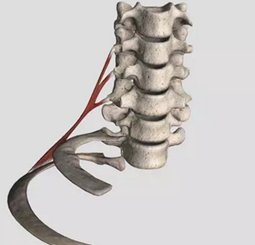
The role of the scalene muscles is: to flex the cervical spine; rotation: to assist in raising the ribs when inhaling.
Why is the scalene muscle tense?
First, from the perspective of the role of the scalene muscles, when they are fixed downward, they cooperate with each other to flex the cervical spine, and the long-term bow posture will cause its tension.
Second, because of insufficient diaphragm breathing, many people use an incorrect breathing pattern (shoulder-thoracic breathing). The scalene muscle is an auxiliary inspiratory muscle. If it is used as the main inhalation muscle, inhalation will occur. The pneumothorax was raised too much, and even shrugged.
Third, students and manual workers need to shrug their shoulders for a long time with heavy objects in both hands or carry heavy backpacks for a long time, and raise their chests to cause tension in the scalene muscles.
It is worth mentioning that the cervical plexus nerve and the subclavian artery pass through the anterior-middle scalene muscle gap.
Therefore, if the anterior-middle scalene muscle is highly tense, the gap will be reduced, compressing the cervical plexus nerve and causing numbness of the upper limbs.
The scalene muscle is often overlooked. It is relatively short and deep, so many symptoms of the scalene muscle may be misdiagnosed as other problems.
1.Upper back pain caused by the scalene muscle is considered a rhomboid problem.
2.Chest-related pain caused by the scalene muscle is mistaken for angina.
3.Shoulder pain caused by scalene muscle is diagnosed as bursitis and tenosynovitis.
4.Traction pain of the upper limb caused by the scalene muscle is considered to be compression of the cervical nerve root.
5.Weakness of the upper limbs and instability of grasping may be caused by the scalene muscles compressing the nerves and making the muscles weak.
The pain points of the scalene muscles often involve the following areas:
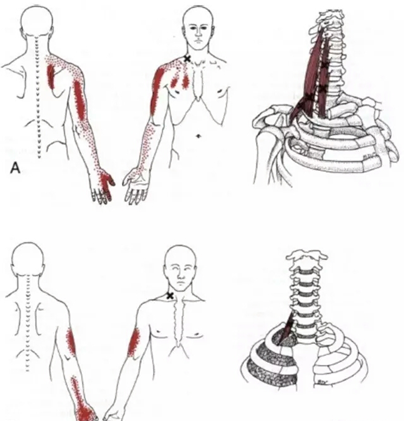
So how do we relax the scalene muscles?
First of all, we must first correct the bad breathing pattern (breathing pattern is mentioned again, to see how important breathing is), use diaphragm breathing instead of chest breathing or shoulder breathing: stimulate the contraction of the transverse abdominal muscles, and the abdomen will move towards Bulge on both sides, bulge ribs to both sides, and lumbar spine against the bed; then exhale and tuck in the belly. Each time for 10 minutes. three times.
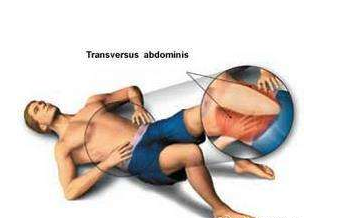
Second, the traction of the scalene muscle is divided into the traction of the anterior scalene muscle, the middle scalene muscle and the posterior scalene muscle.
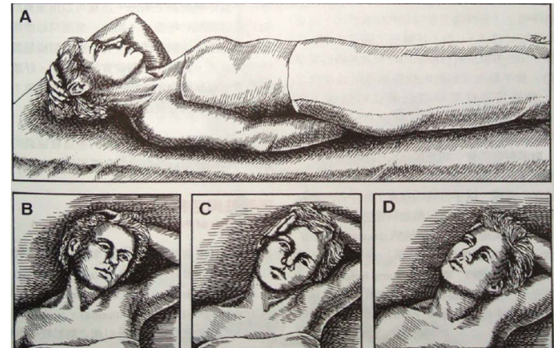
For example, to stretch the right scalene muscle, then:
The cervical spine is flexed on the left side and rotated on the left side to stretch the posterior scalene muscle.
The left side of the cervical spine is flexed, without rotation, and the middle scalene muscle is stretched.
The cervical spine is flexed on the left and rotated on the right to stretch the anterior scalene muscle.
Each movement is stretched for 30 seconds, three sets.
Third, perform pressure release of the scalene muscle.
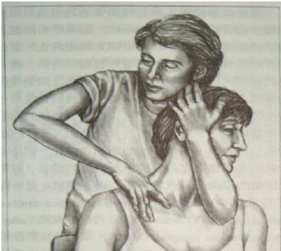
Self-pressing the scalene muscle, you can use the opposite hand to press the problem side.
First find the sternocleidomastoid and trapezius muscles. The scalene muscles are between them. A point behind the sternocleidomastoid muscle is the anterior scalene muscle. A point in front of the trapezius muscle is the middle and posterior scalene muscle. Find the pain point on the thumb, press for 20 seconds, 3 times.
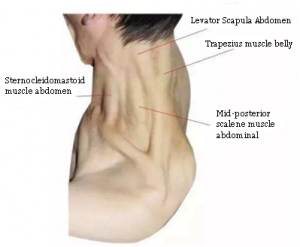
Fourth, correct the normal position of the head and keep the earlobe and the acromion in a straight line, so that the position of the scalene muscle can be normal and avoid compression or tension.
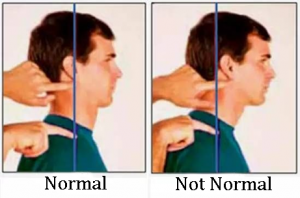
Rehabilitation training method: Standing against the wall, you can use elastic bands or elastic balls, do a slight nodding, and stretch the neck back to make a double chin. This effectively stimulates the deep muscles of the cervical spine and helps the cervical spine return to the correct position . Perform 15 times, 4 groups, once every morning and afternoon.
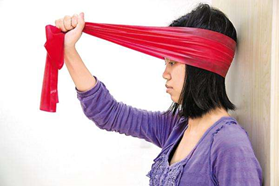
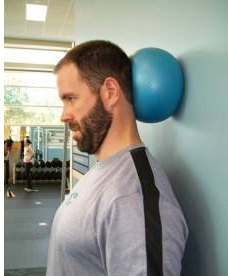
Finally, we must maintain a good lifestyle, take heavy lifting for a long time and take a break; avoid bad breathing patterns.
The more important point:
Don’t be a bow-head family,
Don’t be a bow-head family,
Don’t be a bow-head family,
Say important things three times!
